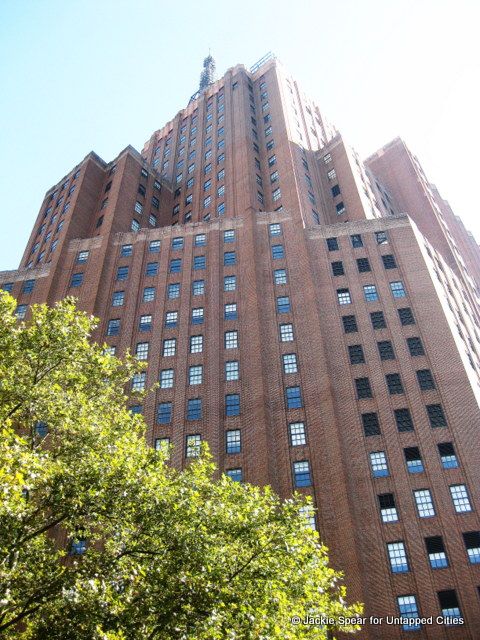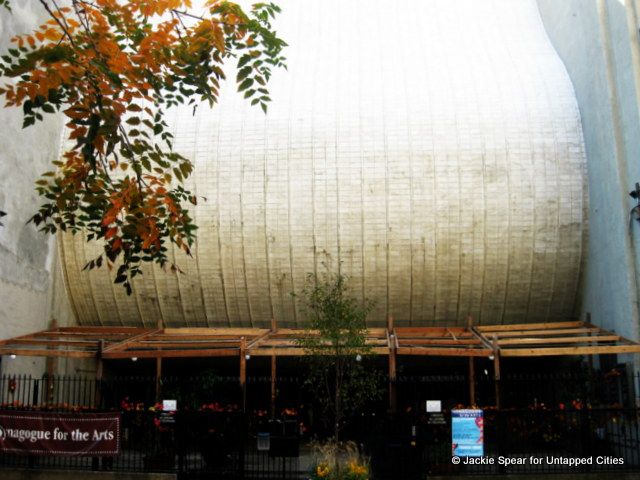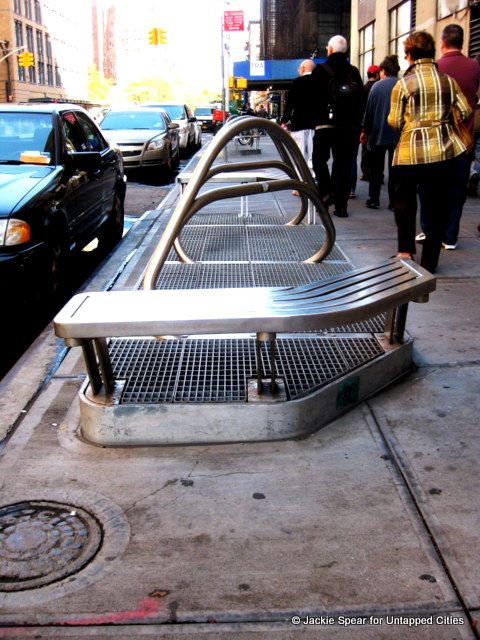Last Chance to Catch NYC's Holiday Notalgia Train
We met the voices of the NYC subway on our nostalgia ride this weekend!


As a nod to author Bill Bryson’s book title “A Short History of Nearly Everything”, the guided tour I ventured on through the neighborhood of Tribeca was just that. Hidden Tribeca was an expansive quest through history, converging on a variety of topics. Our guide, Matt Postal of The Municipal Art Society of New York, masterfully rendered decades of architectural records into a very digestible and interesting narrative of the neighborhood.
The tour was presented in partnership with the Architecture and Design Film Festival that took place over the weekend of October 18th — 21st. Fellow tour goers and myself met outside of the Tribeca Cinema to begin our exploration of the landmark districts with their historic masonry structures and cast iron buildings.
Tribeca, which is an acronym for “the triangles below Canal Street” is comprised of 5 historic districts. When walking around Manhattan, you may have noticed that some blocks have different colored street signs. A green street sign means that not all of the buildings on the block are part of the Landmarks Commission’s selection. A brown sign means that the entire block has been approved by the Commission as a historic landmark. There are currently 11 Commissioners on the board who are in charge of preserving the value, authenticity, and heritage of New York City’s landmarks and the buildings in the historic districts.

First stop we ventured down the shortest alley in Manhattan, York Street. The building pictured above was designed by Enrique Norton. He is extremely active in New York City and best known for designing Mercedes House, the apartment building on 10th avenue with the striking curving terraces. The objective for the design of this building was to insert a glass building within the middle of the pre-existing structures, so that it looks different from every side.

Around the corner on 6th avenue, the park pictured above was built in the early 1930s for Alexander Graham Bell. This section of 6th avenue was cut through by the construction of the A subway track and was not originally engineered to be a park. The construction of the subway system tore up much of Manhattan above ground during this time, rendering many an estranged parcel of land into small parks.

The building across the street from the park was built for AT&T by Ralph Walker in the late 1920s to bring together all of their long distance phone services into a single building. According to “New York 1930”, when they constructed this building, they built an enormous truss over the existing building to keep the original building intact. It was the largest telephone building in New York City at the time of its inception. At the time, 25% of all long distance calls worldwide went through this building. Aside from its sheer height and mass, the most impressive feat accomplished by Walker was that he was able to create a building with such tremendous visual interest when he was only allocated a budget for brick. The setbacks are asymmetrical and the brick originally had an ombre affect, so as your eyes go up towards the skyline it gets lighter. The purpose of this formation of the bricks was to have the illusion of a spotlight being set on the building.

Continuing a few blocks East of 6th avenue, we stopped in front of the Synagogue for the Arts on White Street. Ironically for being a part of the historic Landmarks District, this building is not what the Tribeca Historic district is about. The Landmarks Commission was founded after this building was constructed around 1965. William Berger was the architect of this tear shaped building, which is made of reinforced concrete and covered by a veneer of thin white marble. It is wedged between two very traditional masonry buildings, which serve as a perfect contrast for this structure. There are gaps in the concrete to allow light within the sanctuary.
It is an excellent example of mid-century modernism in New York City and shows the impact of the Guggenheim Museum. The Guggenheim was finished in 1959 and was largely responsible for cultivating a real taste for abstract concrete forms in Manhattan. Originally there was no fence or structures in the background, so it had the appearance of floating above the ground. Modern architecture depends on a high degree of maintenance and unfortunately this structure is very much lacking the attention it deserves.

The building pictured above is an example of the type of buildings surrounding the Synagogue. This part of Tribeca was mainly centered around the textiles industry and this building was originally built for a horse saddlery in 1861.

In the 19th century, Broadway was the main and most fashionable street in Manhattan. The original Tiffany’s was a few blocks away, there were saloons, bookstores, and the main activity of the day was to go out in all of your finery and have your photo taken. There were several photography studios in the area and they were all located on the upper floors in order to capture the strong sunlight for the lengthy exposures. Mathew Brady had his studio on the top floor of the middle building pictured above in the late 1850s. He was the photographer at the time in New York. When this building became an historic landmark, it was believed that he took Abraham Lincoln’s photograph here. However this was not the case as he had already moved his studios to 10th street at that time. His assistants were also very famous. Alexander Gardner who was best known for photographing the Civil War worked with Brady along with Timothy O’Sullivan. Timothy O’Sullivan had the critical mission from Congress to document the West for the consideration of the National Parks System.




Rounding around Broadway we ventured down the tiny and dark Courtlandt Alley as pictured in the photos above. The most unique part of this entire tour was the peculiar museum concocted in an abandoned freight elevator. The owners of this miniature museum work in the film industry and on their website they inform readers that the nonprofit museum collects “strange artifacts and objects removed from their narratives”. I appreciated the satire of the whole production and even more so its name, as it is simply called Museum.

The State Insurance Fund Building pictured above was built at the end of the Civic Center in 1955 by Lorimer Rich. The building is actually not a landmark and the State is very against it ever becoming one. The beauty of the building lays in its continuous ribbon windows; designed so that you have panoramic views of the surrounding city. The little projecting awnings serve to break up the intensity of the light. The cantilevered entrance marquee is very celebrated and a pivotal piece of its state of the art design.
Juxtaposing the Art-Deco style of the State Fund building next door stands the masculine, monstrous and obtrusive second AT&T building. It is 50 stories high, completely faced with granite and is windowless in order to maintain the internal temperature for all of the telecommunication technology. It was built in the 1970s and the architect attempted to make it look like an abstract sculpture so as not to be so abrasive to the New York City neighborhood. Jokingly, Postal said this building is considered one of the Top 10 ugliest buildings by New Yorkers.

At the end of the tour, Postal pointed out the multi-purpose seating area slash bike racks that are built over the subway storm gates. They are very clean and modern in their design. It is a new project commissioned by the MTA that will extend throughout lower Manhattan so as to help subside the flooding of the subway tracks that is being caused by the rising water levels.The tour was very informative and it was powerful to see how the neighborhood has transformed from a textile and dry goods industries hub to a thriving, highly sought-after, and developing piece of real estate in Lower Manhattan.To learn more about the history of Manhattan or to check out a guided walking tour, visit The Municpal Art Society’s website here.Get in touch with the author @jacks2487
Subscribe to our newsletter